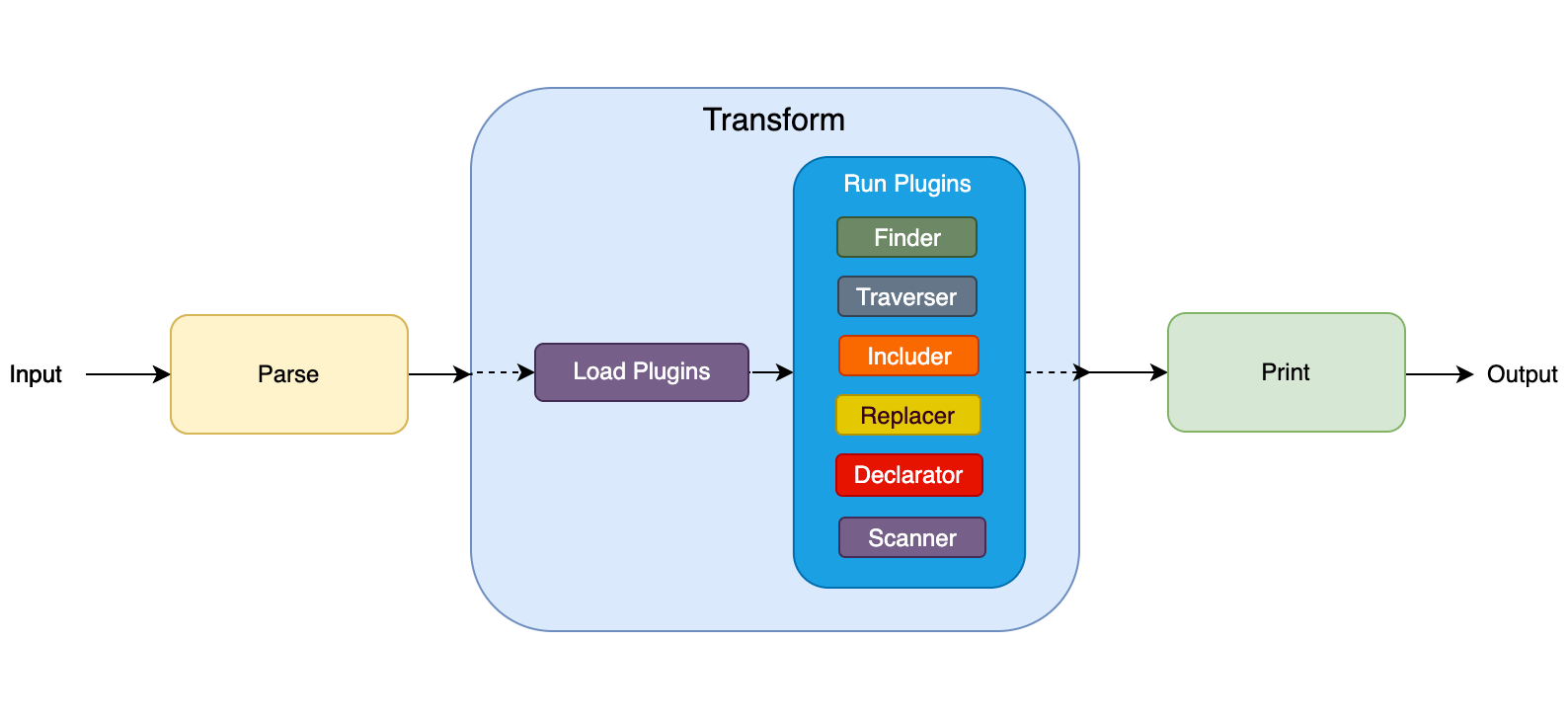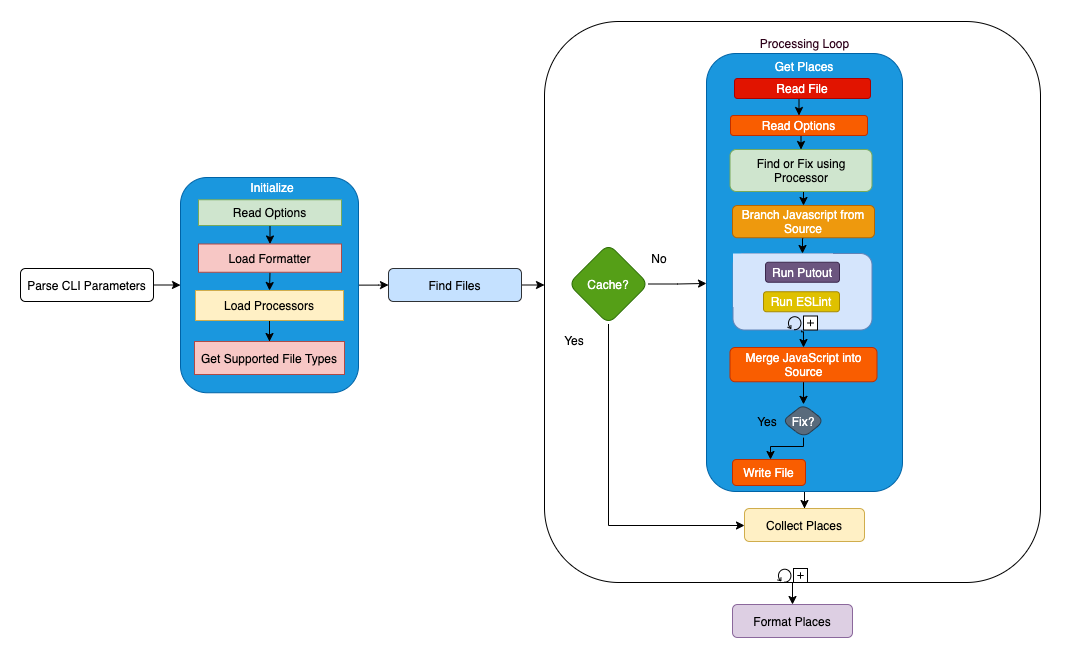Putout Architecture
Putout consists of a couple simple parts, here is a workflow representation:

And here is a CLI scheme:

🌲 The Tree of Syntax
On the bottom level of 🐊Putout layes down Syntax Tree. This is data structure that makes possible to do crazy transformations in a simplest possible way (opens in a new tab). It used mostly in compilers development.
You can read about it in Babel Plugin Handbook (opens in a new tab). To understand how things works from the inside take a look at Super Tiny Compiler (opens in a new tab).
Preoccupied with a single leaf, you won't see the tree. Preoccupied with a single tree, you'll miss the entire forest. When you look at a tree, se it for its leafs, its branches, its trunk and the roots, then and only then will you see the tree.
(c) Takuan Soho, "The Unfettered Mind: Writings of the Zen Master to the Sword Master"
Consider next piece of code:
hello = 'world';It looks this way in ESTree (opens in a new tab) JavaScript syntax format:
{
"type": "AssignmentExpression",
"operator": "=",
"left": {
"type": "Identifier",
"name": "hello"
},
"right": {
"type": "StringLiteral",
"value": "world"
}
}🐊Putout based on Babel AST (opens in a new tab). It has a couple differences from ESTree which are perfectly handled by estree-to-babel (opens in a new tab) especially when 🐊Putout running as a plugin for ESLint.
🌴 Laws of the Jungle
- 🐅
engineschilling withengines, and chasingplugins,processors,operators; - 🦌
pluginschilling withpluginsandoperatorsviarequire('putout').operator; - 🦒
processorschilling withprocessors; - 🐃
operatorschilling withoperators;
💚 Engines
Engines is the heart of 🐊Putout: Parser, Loader and Runner are running for every processed file. Processor runs all the processors.
| Package | Version |
|---|---|
@putout/engine-parser |  (opens in a new tab) (opens in a new tab) |
@putout/engine-loader |  (opens in a new tab) (opens in a new tab) |
@putout/engine-runner |  (opens in a new tab) (opens in a new tab) |
@putout/engine-processor |  (opens in a new tab) (opens in a new tab) |
🧪 Processors
With help of processors (opens in a new tab) 🐊Putout can be extended to read any file format and parse JavaScript from there.
Here is a list of built-int processors:
You can disable any of them with:
{
"processors": [
["markdown", "off"]
]
}And not bundled processors:
| Package | Version |
|---|---|
@putout/processor-typescript |  (opens in a new tab) (opens in a new tab) |
@putout/processor-html |  (opens in a new tab) (opens in a new tab) |
To enable it use:
{
"processors": [
["typescript", "on"]
]
}Processors can be tested using @putout/test/processors (opens in a new tab).





